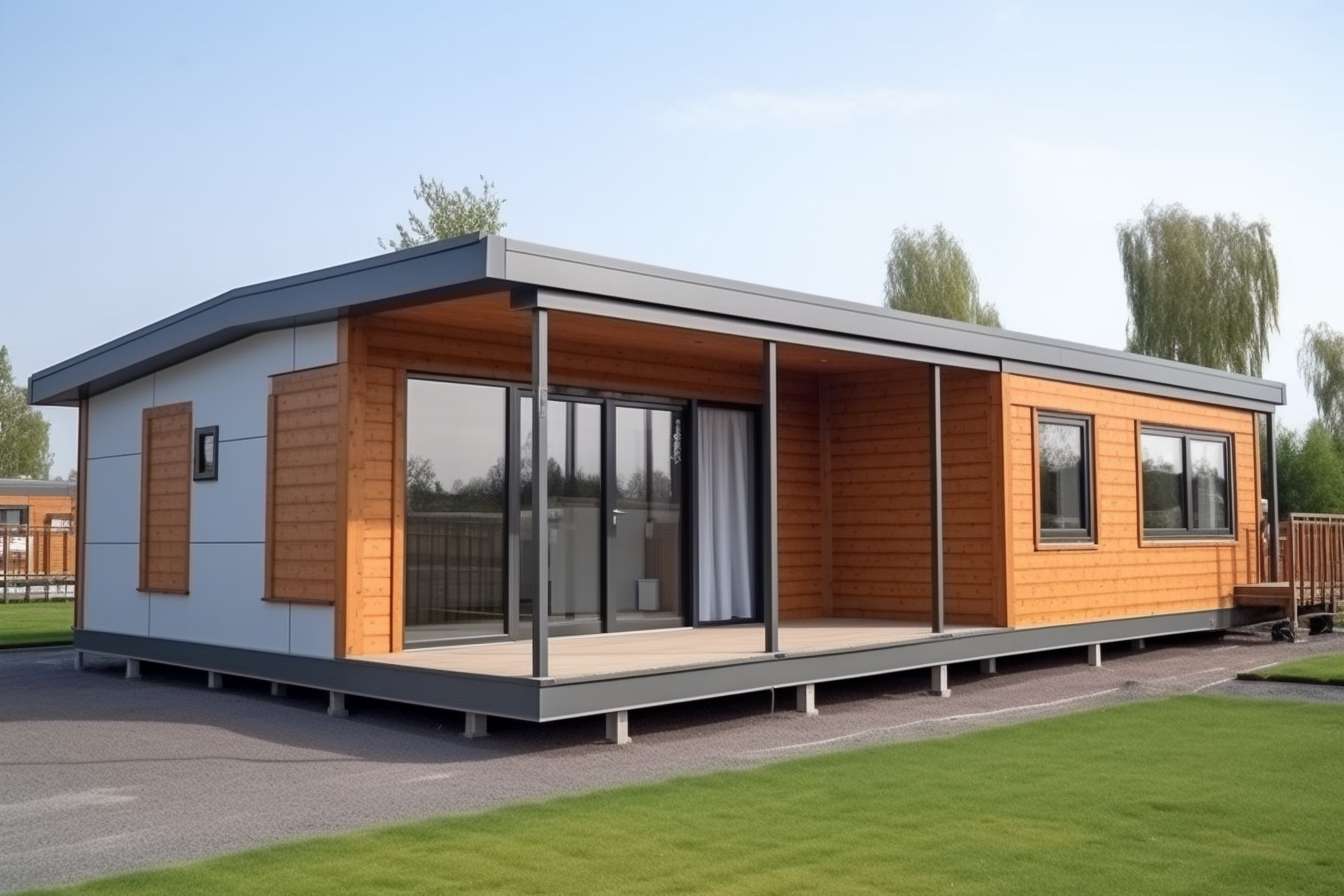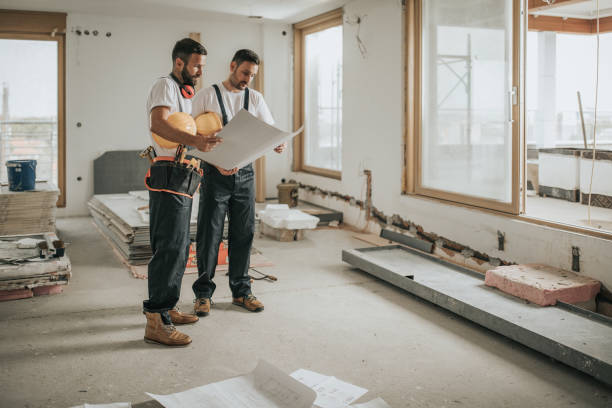The Modern Revolution of Prefabricated Homes: A Complete Guide
Prefabricated homes have transformed from basic, cookie-cutter structures into sophisticated, sustainable living solutions that offer remarkable flexibility and efficiency. Today's prefab homes combine innovative design, advanced manufacturing techniques, and eco-friendly materials to create high-quality residences that can be assembled in a fraction of the time compared to traditional construction methods. This comprehensive guide explores the key aspects of modern prefab homes and why they're becoming an increasingly popular choice for homeowners.

Key Advantages of Prefabricated Homes
Prefabricated homes offer numerous benefits that make them increasingly attractive to modern homebuyers. First and foremost is construction speed—most prefab homes can be completed in a matter of weeks or months rather than the year or more typically required for traditional builds. This rapid timeline reduces labor costs and minimizes the risk of weather-related delays. Energy efficiency represents another significant advantage, as factory construction allows for more precise insulation installation and tighter building envelopes. Many prefabricated homes are designed with sustainability in mind, utilizing renewable materials and energy-efficient systems that lower utility bills and reduce environmental impact.
Quality control is substantially improved in factory settings where construction takes place in controlled environments, protected from weather elements that can compromise building materials. This controlled environment also means less material waste, as manufacturers can precisely calculate requirements and recycle excess materials. Additionally, prefabricated construction typically generates less on-site waste and disruption to the surrounding environment, making it a more neighborhood-friendly option in established areas.
Materials Used in Prefabricated Construction
The materials used in modern prefabricated homes have evolved significantly, incorporating both traditional and innovative options that enhance durability, sustainability, and aesthetic appeal. Structural systems typically utilize engineered wood products like laminated veneer lumber (LVL) and cross-laminated timber (CLT), which offer superior strength and dimensional stability compared to conventional lumber. Steel framing is also common, providing excellent structural integrity and resistance to pests, fire, and extreme weather conditions.
For exterior finishes, manufacturers offer everything from fiber cement siding and architectural metal panels to natural wood and stone veneers. These materials are often pre-finished in the factory, ensuring consistent application and eliminating the need for on-site painting or finishing. Insulation technologies have also advanced, with many prefab homes utilizing high-performance options like structural insulated panels (SIPs), spray foam insulation, and recycled denim or cellulose that deliver impressive R-values and energy efficiency.
Interior materials have similarly improved, with prefabricated homes featuring the same high-quality finishes found in traditional construction—engineered hardwood flooring, quartz countertops, custom cabinetry, and designer fixtures. The misconception that prefab homes use inferior materials has been thoroughly debunked by today’s sophisticated manufacturing processes and material selections.
The Prefabricated Home Building Process
The journey from concept to completed home follows a well-defined process that ensures efficiency and quality control at every stage. Initially, clients work with designers to select and potentially customize a floor plan from the manufacturer’s offerings. Once designs are finalized and permits secured, the manufacturing phase begins in the factory. Here, individual modules or panels are constructed in assembly-line fashion, with specialized teams handling different aspects of construction—framing, electrical, plumbing, insulation, drywall, and finishing work.
While factory construction progresses, site preparation occurs simultaneously. This includes foundation work, utility connections, and necessary grading. When modules are complete—typically 80-90% finished with interior finishes, fixtures, and even appliances installed—they’re carefully transported to the building site. The assembly phase involves craning the modules into place on the prepared foundation, where they’re joined together precisely according to design specifications.
Final connections of utilities, sealing of joints between modules, and completion of any remaining interior and exterior finishes happen on-site. This convergence of off-site manufacturing with on-site finishing work represents a hybrid approach that maximizes efficiency while ensuring customization. The entire process, from initial design to move-in, typically takes 3-6 months—significantly faster than the 9-18 months commonly required for traditional construction.
Customization Options for Prefabricated Homes
Modern prefabricated homes have shed the cookie-cutter reputation of their predecessors, offering extensive customization options that rival those of traditionally built homes. Many manufacturers provide a range of base models that can be modified to suit individual preferences and site requirements. Floor plans can often be reconfigured to add, remove, or resize rooms according to the homeowner’s needs. Exterior elements like roof pitches, window placements, porches, and decks can be tailored to both aesthetic preferences and functional requirements.
Interior customization options are equally impressive, with homeowners able to select from various finish packages that include flooring materials, cabinet styles, countertop materials, lighting fixtures, and hardware. Some manufacturers offer completely custom designs, working with architects to create one-of-a-kind homes that are simply built using prefabrication methods. Smart home technology integration has become increasingly common, with prefabricated homes pre-wired for automation systems that control lighting, climate, security, and entertainment.
Even structural customizations are possible, such as ceiling height variations, specialized room requirements like home theaters or wine cellars, and accessibility features for aging in place or special needs. The level of available customization depends on the manufacturer and price point, but the industry has moved decisively away from the limited options of the past.
Pricing and Cost Considerations for Prefabricated Homes
Prefabricated home pricing varies widely based on design complexity, size, customization level, materials, and manufacturer. Most prefab homes cost between $100 and $250 per square foot, compared to $150-$400 per square foot for traditional construction. This price typically includes design, manufacturing, transportation, and assembly, though site preparation, foundation, utility connections, and landscaping usually represent additional costs.
| Home Type | Average Cost Range (per sq ft) | Typical Timeline | Key Considerations |
|---|---|---|---|
| Modular Homes | $100-$200 | 3-4 months | Most complete from factory, 80-90% finished upon delivery |
| Panelized Homes | $150-$250 | 4-6 months | Faster on-site assembly, more customization options |
| Kit Homes | $80-$150 | 6-9 months | Lower initial cost but requires more on-site labor |
| Luxury Prefab | $250-$400 | 5-8 months | High-end finishes, advanced technology integration |
| Container Homes | $100-$200 | 2-3 months | Eco-friendly, unique aesthetic, space constraints |
Prices, rates, or cost estimates mentioned in this article are based on the latest available information but may change over time. Independent research is advised before making financial decisions.
While initial construction costs may be lower, prefab homes can also save money long-term through energy efficiency. Many prefabricated home companies offer financing options, though traditional mortgage lenders sometimes require additional documentation for prefab construction. Resale value has improved substantially as prefabricated homes gain market acceptance, with many well-designed prefab homes appreciating similarly to traditional homes in the same markets.
Durability and Maintenance Tips
Modern prefabricated homes are built to meet or exceed the same building codes and standards as traditionally constructed homes, offering comparable durability and longevity. Factory construction actually provides advantages for structural integrity, as precision equipment ensures exact measurements and proper fastening techniques, while controlled indoor environments prevent materials from being exposed to moisture during construction.
To maintain a prefabricated home, homeowners should follow many of the same practices recommended for traditional homes. Regular inspections of the roof, siding, and foundation help identify potential issues before they become serious problems. Particular attention should be paid to the seams where modules connect, ensuring weatherproofing remains intact. Interior maintenance is identical to traditional homes, including HVAC system servicing, plumbing checks, and appliance maintenance.
Many prefabricated home manufacturers offer warranties that exceed industry standards, often providing structural warranties of 10 years or more, along with separate warranties for systems, appliances, and finishes. This comprehensive coverage reflects manufacturers’ confidence in the durability of their products and provides homeowners with valuable peace of mind.
The prefabricated housing industry continues to innovate, with advances in materials science and manufacturing techniques regularly improving durability while reducing maintenance requirements. Today’s prefab homes are designed to last generations, challenging outdated notions about the temporary nature of factory-built housing.




